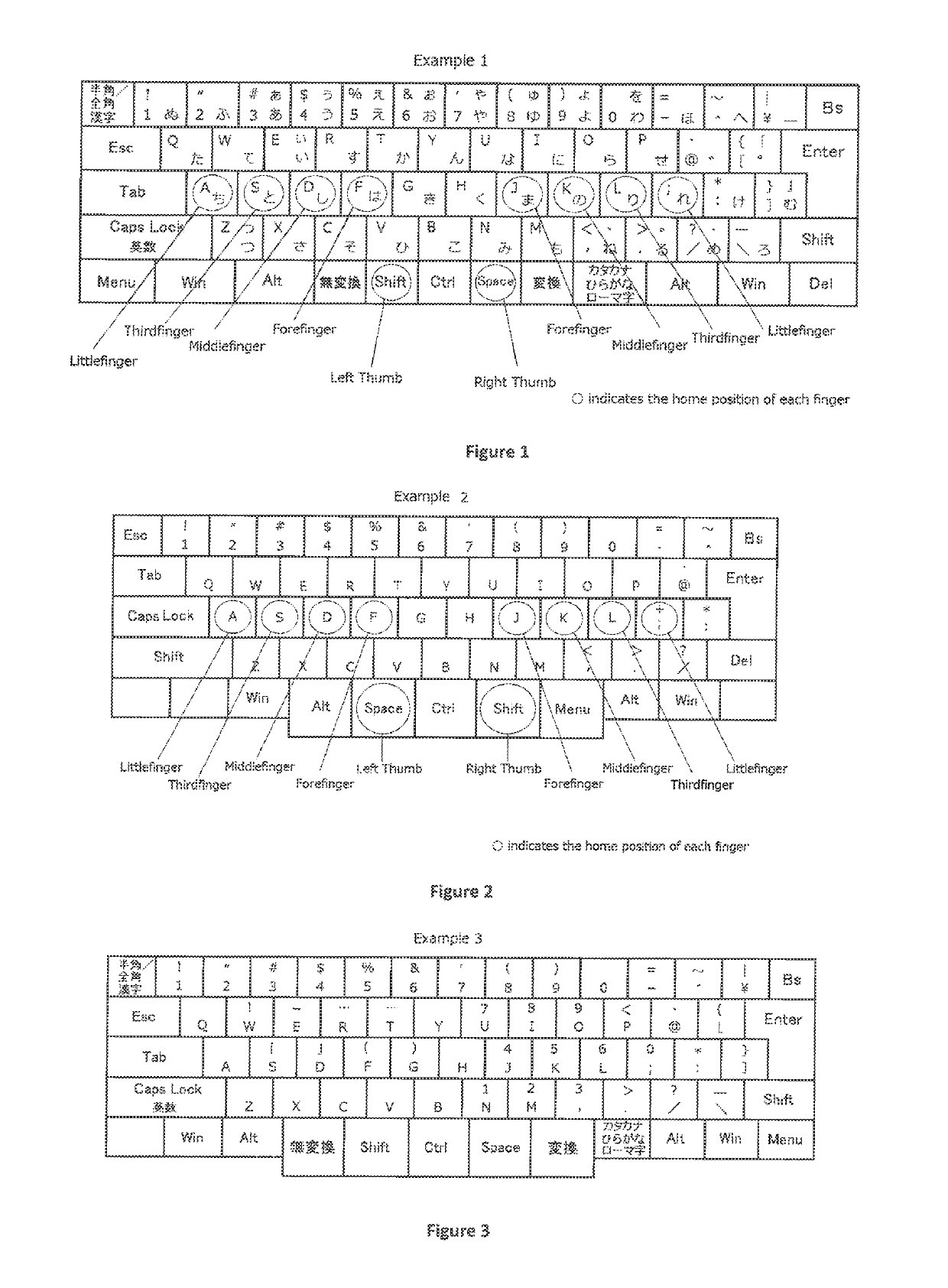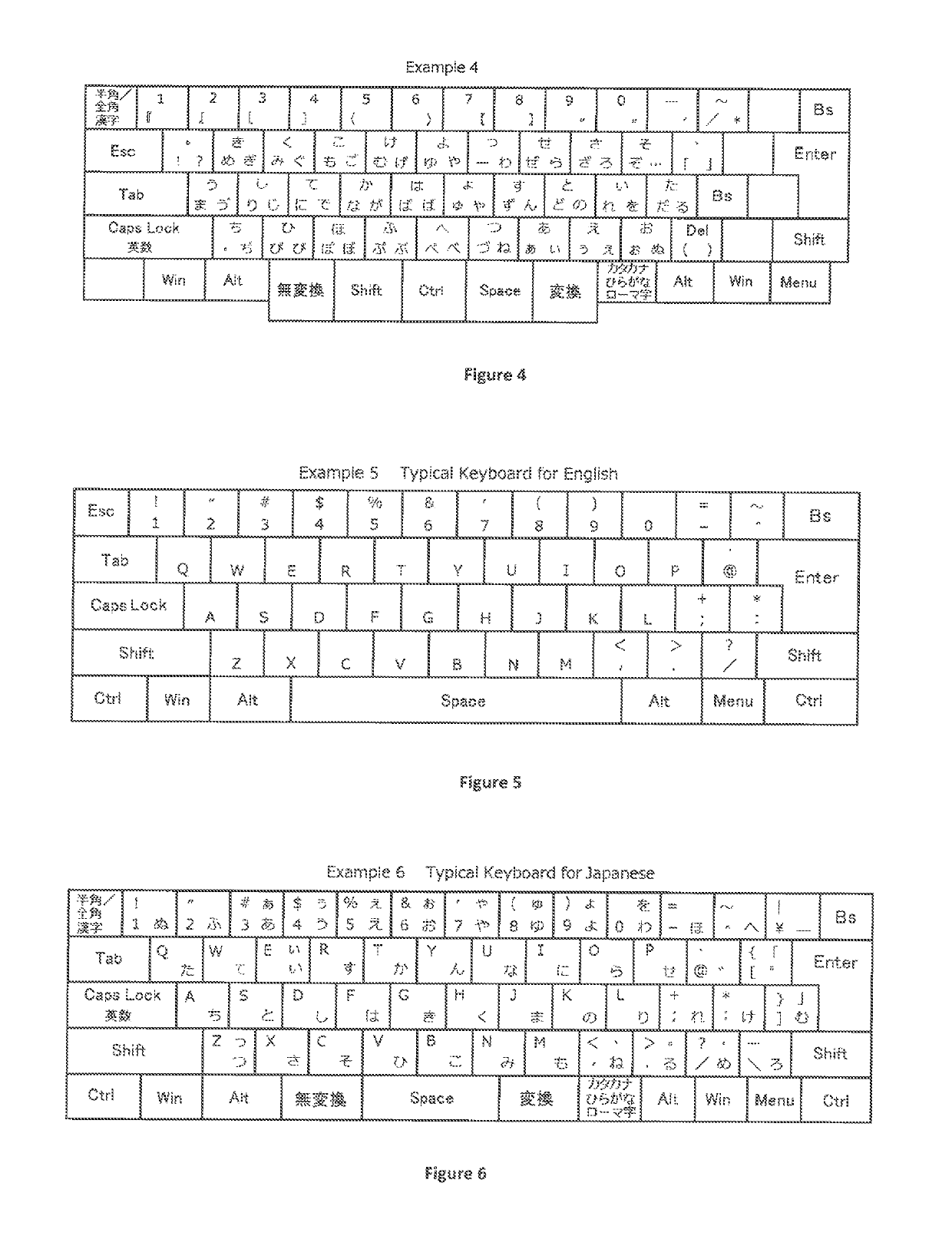Text input keyboard
a keyboard and text input technology, applied in the field of physical keyboards, can solve the problems of reducing the efficiency of input work, and achieve the effects of improving the total operability of the keyboard, facilitating and without looking keys, and improving usability of simultaneous key operation
- Summary
- Abstract
- Description
- Claims
- Application Information
AI Technical Summary
Benefits of technology
Problems solved by technology
Method used
Image
Examples
example 1
[0031]FIG. 1 is the example of the embodiment of the present invention in the Japanese keyboard for a personal computer. In this example, the shift key is placed on the home position of the left thumb, the space key is placed on the home position of the right thumb, and the control key is placed between them. In addition, two control keys generally to be placed in the outer edge of the character key column, and one shift key generally to be placed in the left outer edge of the character key column, are omitted. The key placed on the outside of the home position of the left thumb is Muhenkan key, and the key placed on the outside of the home position of the right thumb is Henkan key. The width of the three keys located in the home position of the left and right thumb and between them, are nearly 1 time of that of character key.
example 2
[0032]FIG. 2 is the example of the embodiment of the present invention in the English keyboard for a personal computer. In this example, the shift key is placed on the home position of the right thumb, the space key is placed on the home position of the left thumb, and the control key is placed between them. In addition, two control keys generally to be placed in the outer edge of the character key column, and one shift key generally to be placed in the right outer edge of the character key column, are omitted. The key placed on the outside of the home position of the left thumb is Alt key, and the key placed on the outside of the home position of the right thumb is Menu key. The width of three keys located in the home positions of the left and right thumbs and between them, are nearly 1.3 times of that of character key.
example 3
[0033]FIG. 3 is the example of the embodiment of the present invention in the Japanese keyboard for a personal computer. In this example, the key remapper, the application to customize the key arrangement of the keyboard which is provided for a fee or free of charge over the Internet, is applied to improve the efficiency of Japanese input work. The letter or the symbol input by the single typing of the key is illustrated in the center of the top of each key, and the characters or symbols input by the simultaneous keystrokes with the shift key are illustrated in the lower part of the key. In Japanese input work, when using Roman characters with the the common QWERTY layout, the operator is forced to do difficult key operation, because it is essential to use the uppermost line of the character key column, in order to input number, dash or bracket. In this example, by using the key remapper, numbers, dash and bracket and the like are designed to be input by the simultaneous keystrokes ...
PUM
 Login to View More
Login to View More Abstract
Description
Claims
Application Information
 Login to View More
Login to View More - R&D
- Intellectual Property
- Life Sciences
- Materials
- Tech Scout
- Unparalleled Data Quality
- Higher Quality Content
- 60% Fewer Hallucinations
Browse by: Latest US Patents, China's latest patents, Technical Efficacy Thesaurus, Application Domain, Technology Topic, Popular Technical Reports.
© 2025 PatSnap. All rights reserved.Legal|Privacy policy|Modern Slavery Act Transparency Statement|Sitemap|About US| Contact US: help@patsnap.com



